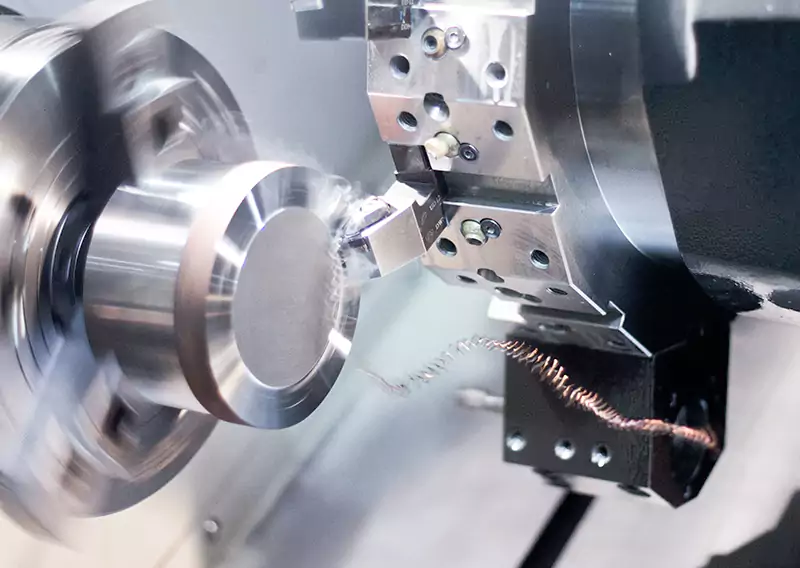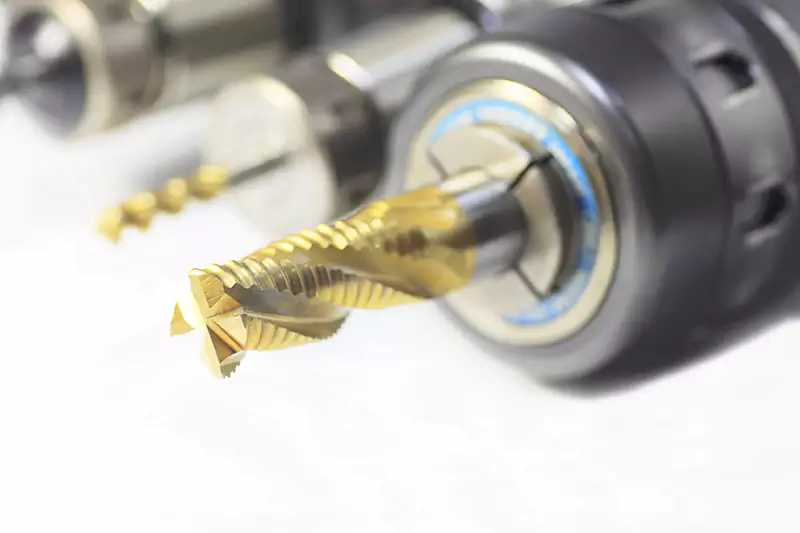Unleashing Perfection: The Power of CNC Precision Machining
In today’s industrial landscape, CNC precision machining has become indispensable across the manufacturing industry in numerous sectors. It plays a crucial role in the production of high-quality custom parts that must meet intricate specifications and stringent tolerance requirements.
CNC precision machining entails the utilization of computer programs to manufacture parts with the utmost accuracy and precision. This process encompasses a range of techniques and materials, necessitating a comprehensive understanding to ensure optimal outcomes for your projects.
This comprehensive guide aims to provide insights into the precision machining process, highlighting the various machine tools employed, outlining the advantages it offers, and exploring its diverse applications. Whether you are seeking custom precision machined parts or simply aiming to enhance your knowledge in the field, this article will serve as a valuable resource. Be sure to read it in its entirety to gain a comprehensive understanding of CNC precision machining.
What Is CNC Precision Machining?
CNC precision machining refers to the process of using computer numerical control (CNC) technology to fabricate custom parts with exceptional precision and accuracy. It involves the utilization of computer-aided design (CAD) software to create a digital model of the desired part, which is then converted into machine-readable instructions.
These instructions are fed into CNC machines, which are equipped with various cutting tools and axes that can move in multiple directions. The CNC machine interprets the instructions and precisely controls the movement of the cutting tools to shape and form the raw material into the desired part.
Key Components and Tools Used in CNC Precision Machining
CNC precision machining relies on several key components and tools to ensure the accurate and precise fabrication of parts. These components and tools play a crucial role in the machining process. Here are some of the key components and tools used in precision CNC machining:

CNC Machine
The CNC machine is the primary equipment used in precision machining. It consists of a computerized control system that interprets the program instructions and controls the movement of the cutting tools and workpieces. CNC machines can be milling machines, lathes, or other specialized machines designed for specific machining operations.
Cutting Tools
Cutting tools are essential for removing material from the workpiece during the machining process. They include end mills, drills, taps, reamers, and inserts. These tools are made from various materials, such as high-speed steel (HSS), carbide, or ceramic, and are chosen based on the type of material being machined and the desired outcome.
Tool Holders
Tool holders are used to secure the cutting tools in the CNC machine. They provide stability and rigidity to ensure precise cutting and reduce vibration during machining. Tool holders come in different types, including collets, end mill holders, and lathe tool holders.

Workholding Devices
Workholding devices are used to secure the workpiece in place during machining. They ensure stability and prevent movement or vibrations that could affect the machining accuracy. Common work-holding devices include vises, clamps, chucks, and fixtures.
Probes and Sensors
Probes and sensors are used for measuring and verifying the position, dimensions, and surface characteristics of the workpiece. They provide feedback to the CNC machine, allowing for real-time adjustments and ensuring precise machining.
CNC Controller
The CNC controller is the brain of the CNC machine. It receives instructions from the program and translates them into electrical signals to control the movements of the machine axes, spindle speed, and cutting tool feed rate. The controller ensures the execution of precise machining operations.
CAD/CAM Software
Computer-Aided Design (CAD) and Computer-Aided Manufacturing (CAM) software are used to create the digital models of the parts and generate the machining programs. CAD software allows for the design and modeling of the parts, while CAM software generates the toolpaths and instructions for the CNC machine.
Common Types Of Precision CNC Machine Tools
There are several common types of precision CNC machine tools used in precision CNC machining. These tools are designed to perform specific machining operations with high accuracy and precision. Some of the commonly used precision CNC machine tools include:
CNC Milling Machine
A CNC milling machine uses rotary cutting tools to remove material from a workpiece, creating complex shapes and features. It can perform a variety of operations, including face milling, contour milling, drilling, and tapping. Precision CNC milling machines are distinguished by their capability to reshape stationary raw materials using a rotating cutting tool. They are instrumental in the production of diverse shapes, particularly face-milled features, and peripheral-milled features.
Face-milled features encompass flat surfaces and shallow cavities, while peripheral-milled features involve deeper cavities such as threads and slots. These advanced machines enable the creation of square- and rectangular-shaped components with a wide array of intricate features.
CNC Lathe
A CNC lathe is used for turning operations, where the workpiece rotates while a cutting tool moves along it to create cylindrical shapes. It can produce precise and symmetrical parts, such as shafts, threads, and rings.
CNC Grinding Machine
A CNC grinding machine utilizes abrasive wheels to remove material and achieve high precision surface finishes. It is commonly used for grinding operations on materials such as metal, ceramics, and composites.
CNC Drilling Machine
A CNC drilling machine is designed specifically for drilling holes accurately and efficiently. It can perform drilling operations with precise depths, angles, and hole patterns.
CNC Swiss-Type Machine
A CNC Swiss-type machine combines turning and milling operations in a single setup. CNC Swiss lathes belong to the category of CNC lathes. These lathes rotate workpieces and axially slide them into the machining tool utilizing guide bushings. The utilization of CNC Swiss lathes ensures enhanced workpiece support during the shaping process, leading to components with significantly tighter tolerances. It is commonly used for producing small, intricate parts with high precision, such as screws, pins, and connectors.
CNC EDM (Electrical Discharge Machining) Machine
Electrical discharge machining (EDM) is a machining technique that involves the controlled utilization of electrical sparks to shape materials according to desired specifications. This process goes by various names, including spark eroding, spark machining, die sinking, or wire burning. In EDM, the machinist positions the component beneath an electrode wire.
The programmed machine then generates electrical discharges from the wire, generating intense heat. The heat causes the material to melt, and an electrolytic fluid is employed to flush away the molten material, ultimately forming the desired feature or shape.
CNC Laser Cutting Machine
A CNC laser cutting machine utilizes a laser beam to cut through various materials with precision. It is widely used for intricate cutting operations in industries like metal fabrication, electronics, and signage.
Advantages of High Precision CNC Machining
High-precision CNC machining offers several advantages, making it a preferred method for manufacturing intricate parts. Some of the key advantages include:
Exceptional Accuracy
High-precision CNC machining enables the production of parts with exceptional accuracy and tight tolerances. CNC machines can consistently achieve precise measurements and dimensions, ensuring the final product meets the required specifications.
Enhanced Repeatability
CNC machines are programmable, allowing for the replication of the same machining process repeatedly. This ensures consistent results across multiple production runs, eliminating variations and ensuring high-quality parts every time.
Complex Geometries
CNC machines are capable of machining complex geometries that may be challenging or impossible with conventional methods. They can create intricate features, contours, and shapes with high precision, enabling the production of highly sophisticated components.
Efficient Production
CNC machining is highly efficient, significantly reducing production time compared to manual machining methods. Once the program is set up, CNC machines can work continuously, maximizing productivity and reducing lead times.
Wide Range of Materials
High-precision CNC machining can handle a wide variety of materials, including metals, plastics, composites, and even exotic materials. This versatility allows manufacturers to work with different materials based on the specific requirements of the part or application.
Automation and Reliability
CNC machines operate with a high level of automation, reducing the need for manual intervention. This increases reliability, reduces human error, and enhances overall process control and efficiency.
Cost-Effective for Large Production Runs
While the initial setup costs for CNC machining may be higher compared to manual machining, it becomes cost-effective for large production runs. The automation and efficiency of CNC machining result in reduced labor costs and increased productivity, leading to overall cost savings.
Quick Prototyping
CNC machining is well-suited for rapid prototyping. With the ability to quickly program and set up CNC machines, manufacturers can efficiently produce prototypes for testing and evaluation, speeding up the product development cycle.
Future Trends and Innovations in CNC Precision Machining
CNC precision machining is an ever-evolving field that continues to witness advancements and innovations. Several future trends and innovations are shaping the landscape of precision CNC machining. Here are some notable trends to watch out for:
Automation and Robotics
The integration of automation and robotics in CNC precision machining is expected to increase efficiency and productivity. Collaborative robots (cobots) can work alongside human operators, performing repetitive tasks, and handling heavy workpieces, thereby reducing manual labor and enhancing overall productivity.
Artificial Intelligence (AI) and Machine Learning
AI and machine learning technologies are being applied to precision CNC machining to optimize machining parameters, improve tool life, and reduce cycle times. AI algorithms can analyze machining data and make real-time adjustments, leading to improved efficiency, accuracy, and predictive maintenance.
Internet of Things (IoT) and Connectivity
IoT-enabled CNC machines can connect and communicate with each other, allowing for real-time monitoring, data collection, and analysis. This connectivity facilitates remote monitoring of machining processes, predictive maintenance, and improved overall equipment effectiveness (OEE).
Additive Manufacturing Integration
Integrating additive manufacturing (3D printing) with CNC precision machining offers new possibilities. Hybrid machines that combine CNC machining and 3D printing capabilities enable the production of complex parts with intricate features and geometries.
Advanced Materials Machining
CNC precision machining is adapting to handle advanced materials, such as composites, titanium alloys, and superalloys. Innovations in cutting tools and machining techniques are being developed to address the challenges posed by these materials, enabling precise machining and expanding the range of applications.
Enhanced Surface Finishes
Advancements in tooling, machining strategies, and machining simulation software are leading to improved surface finishes in precision CNC machining. Finishing processes such as high-speed machining, vibration-assisted machining, and cryogenic machining are being explored to achieve superior surface quality.
Sustainable Machining
Environmental sustainability is gaining importance in CNC precision machining. Innovations in machining techniques, lubrication systems, and coolant management are being developed to reduce energy consumption, waste generation, and environmental impact.
Virtual and Augmented Reality
Virtual reality (VR) and augmented reality (AR) technologies are being integrated into CNC precision machining processes. These technologies aid in virtual machine simulation, real-time process visualization, and interactive training, enhancing the overall efficiency and accuracy of machining operations.
CapableMachining has been intensively cultivated in precision CNC machining services for decades, with rich experience. We provide reliable quality, prompt delivery, and considerate service. If you are looking for CNC precision machining services, look no further than CapableMachining.